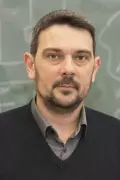Many dualities in mathematics arise from the inherent duality of ‘syntax’ and ‘semantics’ in logic. Classical Stone duality, for example, is the syntax-semantics duality for theories of classical propositional logic, with Boolean algebras encoding the syntax of a propositional theory. The logical perspective on these ‘syntax-semantics’ dualities gives both an intuitive understanding for why mathematicians (or at least logicians) would expect these dualities to hold in the first place, as well as a framework to generalise to nearby logics.
In recent years, new ‘non-commutative’ generalisations of Stone duality have been discovered, involving inverse monoids and étale groupoids. Interestingly, this branch of duality theory was developed in the absence of a logical description. In this talk, we describe a class of logical theories whose syntax-semantics duality is given by a version of non-commutative Stone duality. Rather than originating in an exotic fragment of logic, these are theories of first-order logic which share many of the same properties as the theory of vector spaces, suggesting that non-commutative Stone duality is not so distant from classical logic as one might expect.




